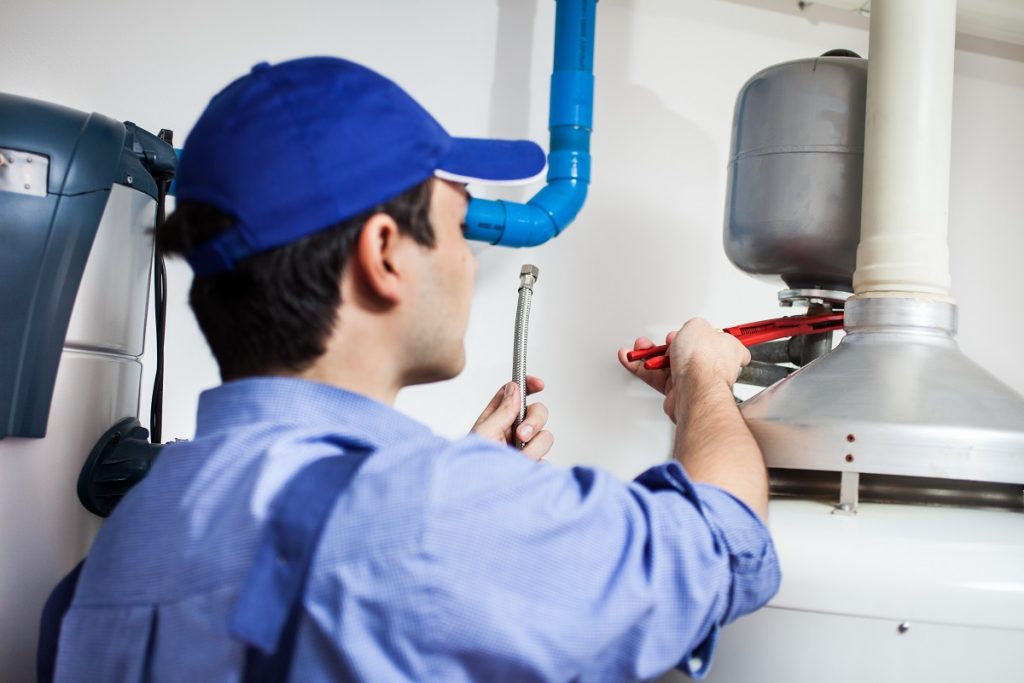Your water heater could shoot up like a rocket and explode. The reason for this “Mythbusters” scenario could be corrosion, which can reduce the all-important home appliance’s capacity to remain intact under pressure. You can prevent this spectacular outcome in your Salt Lake City home by getting water heater repair service as soon as problems arise. Alternatively, get maintenance services to prevent other problems, like sediment buildup.
Sediment buildup can occur when you live in an area that has hard water. With debris at the bottom of your water heater, the home appliance may not be able to do its job. Inefficient water heaters will cost you money on expensive bills and, when it fails prematurely, a replacement. Not only that, you’ll probably have to clean your dishes, wash your clothes, and take showers with muck in the water.
Avoid the expense and aggravation by getting rid of sediment in your water heater with this simple process:
Turn Off the Water Heater
Water heaters can cause first-degree burns even if water contact is indirect. So whether the heater is electric or gas, always do this step. The water inside the tank can remain hot for many hours even when the power is off. If you don’t need hot water, then you may have to wait for several hours.
Turn Off the Cold Water
If ready for the flushing process, cut the cold water supply, often at the shutoff valve. Open the hot water tap and leave it that way to allow entry of air as the tank empties. The displacement of hot water by cold water helps hot water to circulate through the home. With the cold water supply cut off, you can drain the heater completely.
Attach Hose to Drain Valve
The standard garden hose works perfectly for this step, as long as you are able to attach it on the drain valve securely. Get a hose that is long enough to direct the sediment to a drain or bucket. You may want to get a portable pump to transfer water to the upper floor if your water heater is in the basement.
Turn on Faucets and Open Drain Valve
 Once everything is set, open the drain valve, which is either a slot or a dial. You may need a screwdriver to do this step. The water heater should start draining immediately. After draining for a few minutes, inspect the water for sedimentation level; a screen will help. For minimal sediments, flush a few gallons. But heavier sedimentation calls for more serious draining. You can do this by turning the cold water on and off to remove all the debris from the tank. Repeat this process until the water turns clear. If in the course of draining water you find sizable white sediment, this could mean the need for anode rod replacement. You’ll want to inspect this component as well and replace it if necessary. You should do this before you refill the water heater tank.
Once everything is set, open the drain valve, which is either a slot or a dial. You may need a screwdriver to do this step. The water heater should start draining immediately. After draining for a few minutes, inspect the water for sedimentation level; a screen will help. For minimal sediments, flush a few gallons. But heavier sedimentation calls for more serious draining. You can do this by turning the cold water on and off to remove all the debris from the tank. Repeat this process until the water turns clear. If in the course of draining water you find sizable white sediment, this could mean the need for anode rod replacement. You’ll want to inspect this component as well and replace it if necessary. You should do this before you refill the water heater tank.
Finish Flushing
Once the resulting water from the drain valve is satisfactory, you need to put everything back in order. Here’s how to do it:
- Switch off drainage valve and disconnect the water hose
- Close the pressure release valve
- Turn cold water back on
- Turn on the heating elements
With the debris gone from your water heater, your home appliance can do its job better. You can rest easy knowing you won’t have to deal with muck while washing dishes and clothes, and taking showers. Do this yearly, and your water heater will stay efficient and in one piece.

